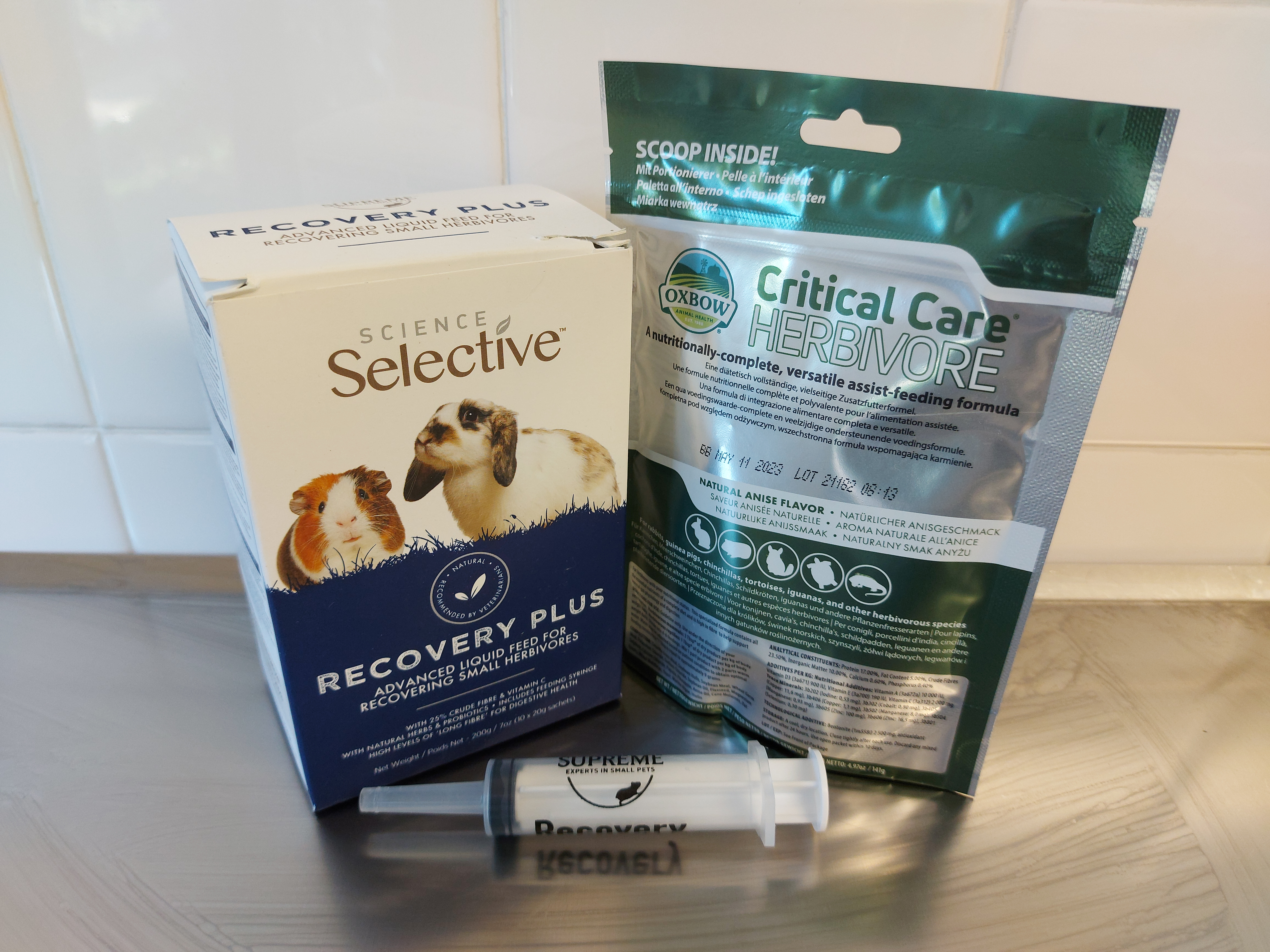In most circumstances cats and dogs can go without eating for a couple of days, however if rabbits and guinea pigs do not eat for even a short period they can be very ill. Rabbits and guinea pigs are prone to stop eating if they are ill. We often need to use syringe feeding to nurse them back to health and keep their guts working. So here is our guide on how to do this.
Why is it important that rabbits and guinea pigs keep eating?
Rabbits and guinea pigs are adapted to eat grass and plants; these are low energy foods that they have to eat continually to get enough nutrition. This means that their digestive system has adapted to be used to a continuous inflow of food. When they stop eating their guts slow down and this leads to a condition known as gut stasis. This leads to bloating, pain and the harmful bacteria in the guts may multiply. This makes the rabbit or guinea pig even less likely to eat and can lead to death if not treated. One of the main ways to treat gut stasis (as long as there is no blockage) is with syringe feeding.
Treating rabbits and guinea pigs who aren’t eating
Syringe feeding is very important to help nurse rabbits and guinea pigs who aren’t eating back to health. However, when they stop eating it is just as important to try and find the cause. When your rabbit or guinea pig stops eating it is imperative to get them to a vets as soon as possible. They may need radiographs and other further investigations. Often they will also need pain relief and other medicines to help combat the gut stasis. The rabbit or guinea pig may also need treatment for the specific cause of the anorexia, although that may not be discovered in all cases.
What can be used for syringe feeding in rabbits and guinea pigs?
There are a few options to choose from here. We recommend that the formula you are using has long length fiber in it to help stimulate the gut. These formulas are likely to work better at getting the gut moving. It is also important to make sure they have vitamin C for guinea pigs. We recommend Oxbow Critical Care for Herbivores or Supreme Recovery Plus. (Note: the normal Supreme Recovery and not the plus version is not suitable for guinea pigs and does not have long length fiber in it).

Tips before you start syringe feeding
It can be scary if you have not done this before, just make sure you have enough time, everything ready and a quiet area with no distractions. It is normal for syringe feeding to take up to half an hour per feed. Also stay calm, as your rabbit or guinea pig will pick up on your feelings and stress. Once the formula feed has been made up in can be kept in the fridge in an airtight container for up to 24 hours. If your rabbit will not sit still then sometimes it can help to wrap them in a towel like a burrito. In some cases the rabbit or guinea pig will take the food readily so it may be worth offering them the end of the syringe to start with to see if they will take it themselves. Remember syringe feeding can take time and requires patience.
Step by step guide to syringe feeding
- Mix up your formula ready to feed. Follow the package instructions but you are aiming for a peanut butter like consistency. Mix thoroughly so that there is an even consistency.
- Fill the syringe with the formula. It can sometimes be easier to remove the plunger from the syringe and fill it up with a spoon or knife and then replace the plunger.
- Get your rabbit or guinea pig into position. It is often best to place them on a surface at waist height. An ironing board can be helpful as you can set the right height to help you. Also cover the surface as it is likely to get messy.
- With your rabbit or guinea pig facing away from you use your non dominant hand to hold their head.
- With the other hand place the syringe into the side of their mouth by sliding it in and around the front teeth. There is a gap between the front and back teeth and this is where you are aiming for.
- Give about 1ml (2ml for larger rabbits) at a time and remove the syringe to allow them to chew. If they do not chew on the table you may need to put them on the floor each time to encourage them to chew.
- Once they have swallowed that mouthful give another. Continue until the syringe is empty or the rabbit or guinea pig keeps spitting the food back out.
- You should aim for around 15-20ml per kg in body weight five times per day. This can be split into smaller amounts more often if needed.
- Clean up your rabbit or guinea pig.
If your rabbit or guinea pig is not eating then please call us on 01702 545558 to make an appointment today.

